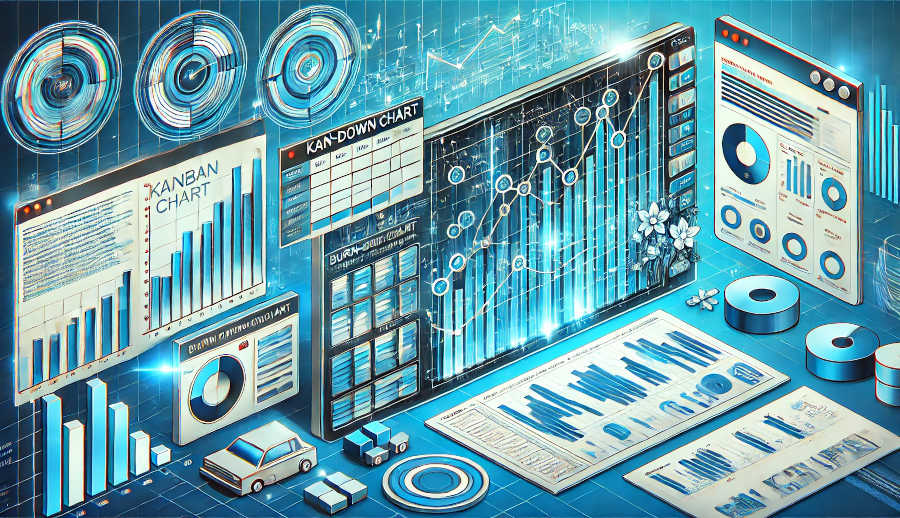IPD (Integrated Product Development) framework design is crucial for companies aiming to enhance product development efficiency and competitiveness. Asynchronous development and CBB (Common Building Block) reuse strategy are two key elements within this framework. Asynchronous development allows different teams or processes to work independently at their own paces, reducing dependencies and accelerating the overall development cycle. CBB reuse, on the other hand, promotes the utilization of pre - developed and proven components, saving time, resources, and improving product quality.
In the context of global competition, companies face increasing pressure to bring products to market faster while maintaining high quality. The traditional synchronous development model often leads to bottlenecks and delays, as one stage has to wait for the previous one to complete. Asynchronous development breaks this chain, enabling parallel progress in different aspects of product development. CBB reuse also addresses the issue of reinventing the wheel, as companies can leverage existing building blocks instead of developing everything from scratch. This article will delve into the details of asynchronous development and CBB reuse strategy in IPD framework design, exploring their benefits, implementation challenges, and best practices.
Asynchronous Development in IPD Framework
Asynchronous development in the IPD framework is a departure from the traditional sequential approach. In a traditional model, product development follows a linear path, from concept generation to design, development, testing, and finally, launch. This sequential flow can be time - consuming, especially when there are dependencies between different stages. For example, the testing phase may have to wait until the development phase is completely finished.
Asynchronous development, however, allows different teams or functions to work simultaneously. For instance, the hardware and software teams can start their development work independently, with defined interfaces and communication channels. This parallelism significantly reduces the overall development time. It also enables faster feedback loops, as teams can identify and address issues earlier in the process. For example, if the software team discovers a compatibility issue with the hardware during their development, they can communicate with the hardware team immediately, rather than waiting until a later stage when the integration is complete.
Moreover, asynchronous development encourages innovation. Different teams can explore different solutions and approaches without being restricted by the progress of other teams. This freedom can lead to more creative and efficient product designs. For example, the design team may come up with a new user interface concept while the engineering team is working on the underlying architecture. This cross - pollination of ideas can result in a more competitive product.
Benefits of Asynchronous Development
One of the primary benefits of asynchronous development is the reduction of time - to - market. By allowing multiple teams to work in parallel, companies can compress the product development cycle. For example, in the automotive industry, the development of the engine, chassis, and infotainment systems can be carried out simultaneously. This not only speeds up the overall development process but also enables companies to respond more quickly to market demands.
Another benefit is improved resource utilization. In a synchronous development model, resources may be idle during certain stages. For example, the testing team may have to wait for the development team to finish their work before they can start testing. In an asynchronous model, resources can be more evenly distributed across different tasks. The testing team can start some preliminary testing on components that are ready, while the development team continues to work on other parts of the product.
Asynchronous development also enhances flexibility. Changes in requirements can be more easily accommodated. If a customer requests a new feature during the development process, different teams can adjust their work independently. The development team can focus on implementing the new feature, while the design team can make any necessary visual adjustments, without disrupting the entire development flow. This flexibility gives companies a competitive edge in a rapidly changing market environment.
CBB Reuse Strategy in IPD Framework
CBB reuse strategy is an integral part of the IPD framework. CBBs are pre - developed components, subsystems, or technologies that can be used across multiple products. These building blocks are designed to be modular and reusable, reducing the need for redundant development efforts.
For example, in the smartphone industry, components such as the camera module, battery management system, and touchscreen technology can be reused across different models. By reusing these CBBs, companies can save development time and costs. Instead of developing a new camera module for each new smartphone model, they can use an existing, proven module and make minor modifications if necessary.
CBB reuse also improves product quality. Since these building blocks have already been tested and validated, the risk of introducing new bugs or reliability issues is reduced. For instance, a well - tested power management CBB can ensure stable power supply across different products, enhancing the overall reliability of the end - product. This not only benefits the company in terms of customer satisfaction but also reduces the cost of post - launch support and product recalls.
Implementation of CBB Reuse Strategy

Implementing a CBB reuse strategy requires a well - defined process. First, companies need to identify potential CBBs within their organization. This involves conducting a comprehensive inventory of existing components, technologies, and subsystems. For example, a software company may review its code libraries, algorithms, and user interface components to determine which ones can be reused.
Once the CBBs are identified, they need to be standardized. Standardization ensures that the CBBs are compatible with different products and can be easily integrated. This includes defining common interfaces, data formats, and communication protocols. For example, a hardware company may standardize the electrical interfaces of its power supply CBBs to ensure they can be used in various products.
Finally, companies need to establish a CBB repository. This repository serves as a central location where teams can access and reuse the CBBs. It should have a user - friendly interface and detailed documentation about each CBB, including its functionality, usage guidelines, and compatibility information. This makes it easier for development teams to find and use the appropriate CBBs in their projects.
Challenges in Asynchronous Development and CBB Reuse
Despite their many benefits, asynchronous development and CBB reuse also face several challenges. In asynchronous development, communication and coordination can be a major issue. Since different teams are working independently, there is a risk of misalignment in goals, requirements, and timelines. For example, the marketing team may have a different understanding of the product launch date compared to the development team, leading to delays or misunderstandings.
Another challenge in asynchronous development is the management of dependencies. Although the goal is to reduce dependencies, some level of interdependence between different tasks is inevitable. For example, the software team may rely on the hardware team to provide certain specifications before they can finalize their software design. Managing these dependencies requires clear communication channels and well - defined interfaces.
In the case of CBB reuse, one of the main challenges is the resistance to change. Some teams may be reluctant to use existing CBBs, preferring to develop their own components. This may be due to concerns about compatibility, performance, or a lack of understanding of the CBBs. Additionally, maintaining the CBB repository can be a challenge, as it requires continuous updating and improvement to keep the CBBs relevant and useful.
Best Practices for Overcoming Challenges
To overcome the challenges in asynchronous development, companies should establish strong communication channels. This can include regular cross - team meetings, shared project management tools, and clear documentation. For example, daily stand - up meetings can be held to update all teams on the progress of different tasks, identify any issues, and discuss solutions.
Regarding the management of dependencies, companies can use dependency management tools. These tools can help track and manage the relationships between different tasks and components. For example, a project management tool can be used to define the dependencies between the software and hardware development tasks, and alert teams when a dependency is about to become a bottleneck.
To address the challenges in CBB reuse, companies need to invest in training and education. Teams should be trained on the benefits of CBB reuse, how to use the CBB repository effectively, and how to ensure the compatibility of CBBs with their projects. Additionally, companies can incentivize teams to reuse CBBs, for example, by rewarding teams that successfully incorporate CBBs into their products.
Conclusion
Asynchronous development and CBB reuse strategy are essential components of an effective IPD framework design. Asynchronous development offers significant advantages in terms of reducing time - to - market, improving resource utilization, and enhancing flexibility. CBB reuse, on the other hand, helps in saving development time and costs, as well as improving product quality.
However, both approaches face challenges such as communication and coordination in asynchronous development and resistance to change in CBB reuse. By implementing best practices such as strong communication channels, dependency management tools, and training and education, companies can overcome these challenges.
In today's highly competitive business environment, companies that can effectively implement asynchronous development and CBB reuse strategy in their IPD framework are more likely to gain a competitive edge. They can bring products to market faster, with higher quality, and at a lower cost, meeting the ever - changing needs of customers and staying ahead of the competition. As technology continues to evolve, these strategies will become even more crucial for companies to thrive in the global marketplace.
ARTICLE TITLE :Asynchronous development and CBB reuse strategy in IPD framework design ,AUTHOR :ITpmlib

















